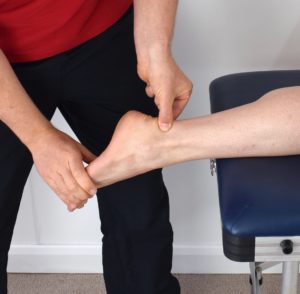When you’re injured, stressed, or simply in need of some recovery, it’s natural for you to consider natural healing methods. Both massage therapy and physical therapy might come to mind. At the end of the day, they have the same goal, i.e., to relieve pain and help with optimal body functions.
Before we get into the debate of which one is better for your physical health, let’s take a closer look at what they encompass.
What is Massage Therapy?
Massage therapy basically involves the manipulation of the soft tissues in order to optimize the muscles, tissue, tendons, ligaments, and other body parts.
It has a therapeutic effect on your body and helps in improving mobility, supporting lymphatic drainage, reducing tension, and eliminating pain.
You can apply massage therapy to patients of all ages and has been used to treat both acute and chronic conditions.
 The first massage techniques were developed way back in the 18th century with the advent of the Swedish massage. But there’s also evidence to show that muscle manipulation can relieve stress, anxiety, and improve functioning.
The first massage techniques were developed way back in the 18th century with the advent of the Swedish massage. But there’s also evidence to show that muscle manipulation can relieve stress, anxiety, and improve functioning.
In fact, it was used in ancient China, Japan, India, the Arab world, Greece, and Rome for those very reasons.
Some skeptics argue that massage therapy is simply a placebo treatment and isn’t grounded in any scientific evidence. But a recent study which studied the effects of a 60-minute massage delivered once a week to patients suffering from osteoarthritis has debunked these claims.
Researchers identified 125 people suffering from osteoarthritis of the knee and tasked them to receive 8-week doses of Swedish massage therapy. Pain, function, joint flexibility, and other measures were tested at regular intervals to determine the efficacy of the treatment.
 What the researchers discovered was that there was a significant reduction in pain and improvement in form and function with patients who received 1 hour of massage once a week.
What the researchers discovered was that there was a significant reduction in pain and improvement in form and function with patients who received 1 hour of massage once a week.
They added that there is “promising potential for the use of massage therapy for osteoarthritis of the knee”.
Before you start a massage therapy treatment plan, it’s likely that your therapist will spend some time with you to determine the source of your pain and your medical history.
This initial assessment is vital in creating a personalized plan as it will help determine the existing health and condition of your muscles.
Don’t try to downplay the importance of this step! Yes, it may seem unnecessary as you just want the treatment to begin (and ASAP), but it’s crucial that you spend time with your therapist so that the benefits of massage therapy are firmly rooted.
What is Physical Therapy?
Physical therapy, or commonly known as physiotherapy, is the treatment of disease or injury by using massage and exercise as opposed to medicine and other mainstream allopathic measures.
According to the United States Department of Labor:
“…physical therapists provide care to people of all ages who have functional problems resulting from, for example, back and neck injuries, sprains, strains and fractures, arthritis, burns, amputations, stroke, multiple sclerosis, conditions such as cerebral palsy and spina bifida, and injuries related to work and sports.”
 The major difference between physical therapy and massage therapy is that physical therapy practitioners i.e. physiotherapists, must have had formal education and training in the field.
The major difference between physical therapy and massage therapy is that physical therapy practitioners i.e. physiotherapists, must have had formal education and training in the field.
Hence, physical therapy is defined as a professional health discipline primarily towards the prevention or elimination of movement dysfunction and the upliftment of physical capacity.
In Canada, all physical therapy practitioners must apply to the Canadian Alliance of Physiotherapy Regulators in order to be able to practice. Said practitioners are regulated by the Regulated Health Professions Act 1991.
Most folks aren’t aware that a variety of neurological conditions — such as Parkinson’s disease, multiple sclerosis, stroke, brain damage, and spinal cord injuries — can also be treated with physiotherapy.
Which One is Better?
Physical therapy and massage therapy have similar goals, i.e., to make people feel better, improve the overall health of their muscles including form and function, as well as assist in long-term health goals.
But it’s important to understand that massage therapy is primarily associated with alleviating pain and discomfort, especially when you suffer from the following:
- a motor vehicle accident
- a sport-related injury
- muscle tension
- back, leg, or neck pain
- carpal tunnel syndrome
- tendonitis
- fibromyalgia
- and post-surgical rehabilitation
Since physical therapy is an established medical profession, the range of treatments and solutions professionals offer is wider and more encompassing in nature. The tradeoff here is that massage therapists would have more specialized massage training and experience. Which offers a different kind of recovery and ongoing pain relief throughout the process, as well as a satisfying end result.
 Physiotherapists are often present in hospitals, senior care centers, and sports medicine facilities to offer long-term assistive care. They will, similar to massage therapists, first chart out a personalized recovery plan.
Physiotherapists are often present in hospitals, senior care centers, and sports medicine facilities to offer long-term assistive care. They will, similar to massage therapists, first chart out a personalized recovery plan.
But because of the fact that the nature of injuries they’re dealing with can be more severe, the recovery plan will definitely be more thorough and take a longer time to complete.
It may also require a combination of several types of treatment options.
For an all-encompassing recovery process, having both professionals assess the situation, and provide custom recovery process, would be the best bet for a quick & comfortable recovery.

